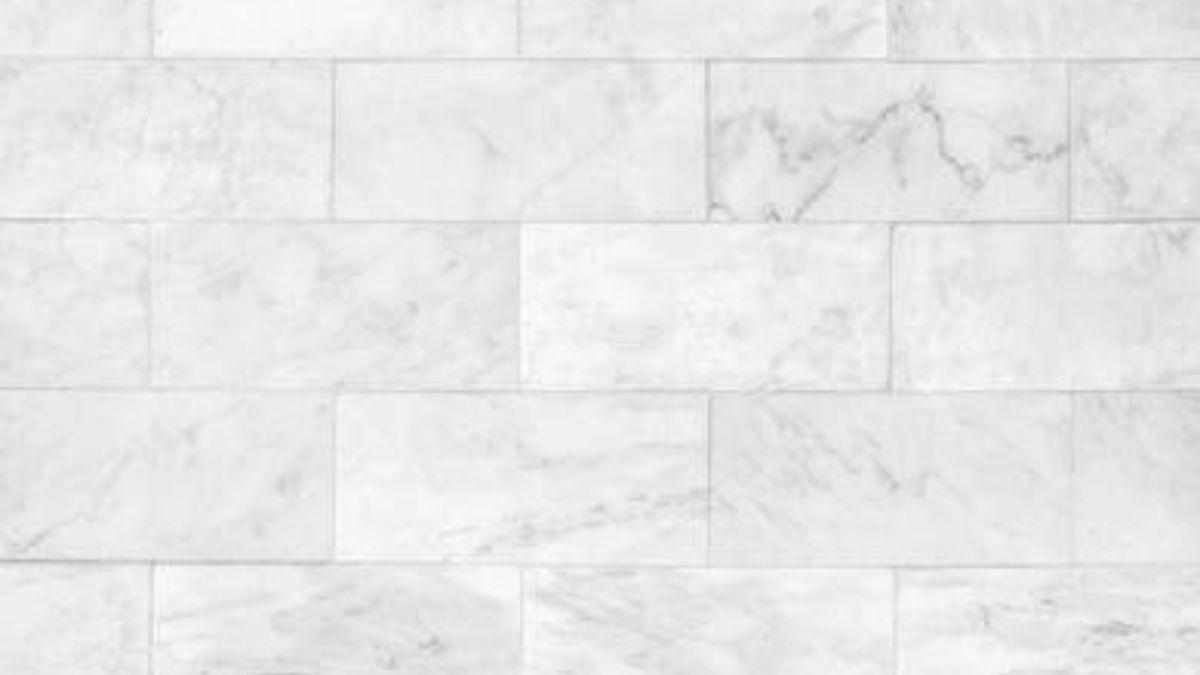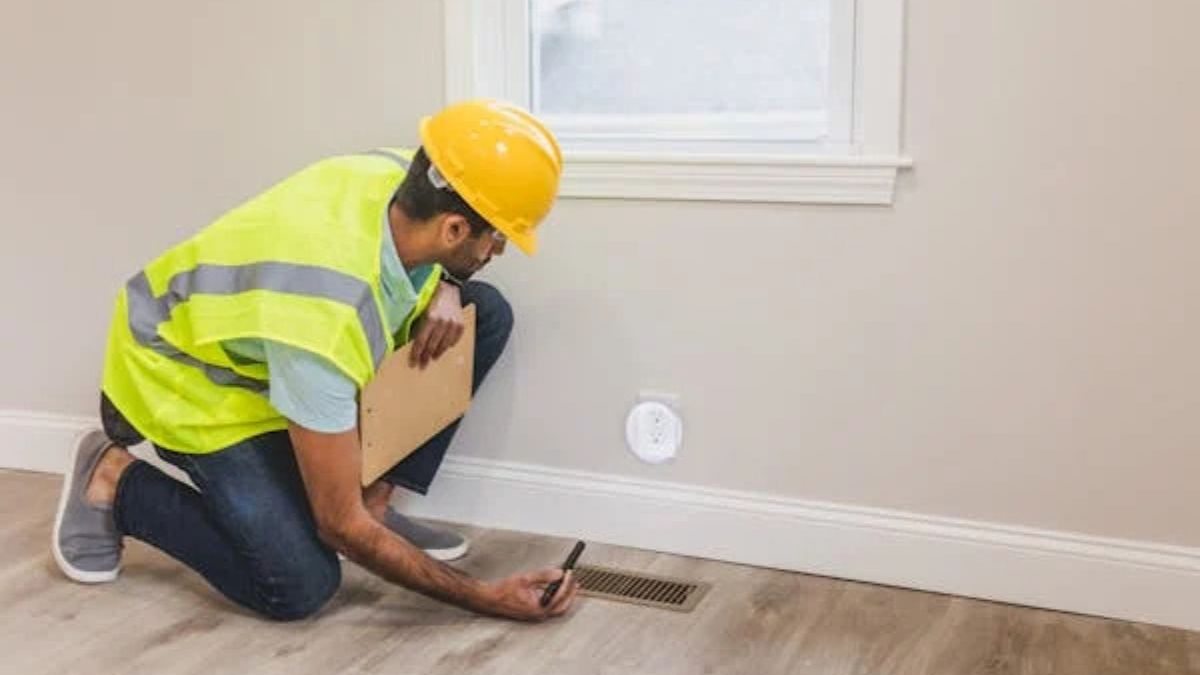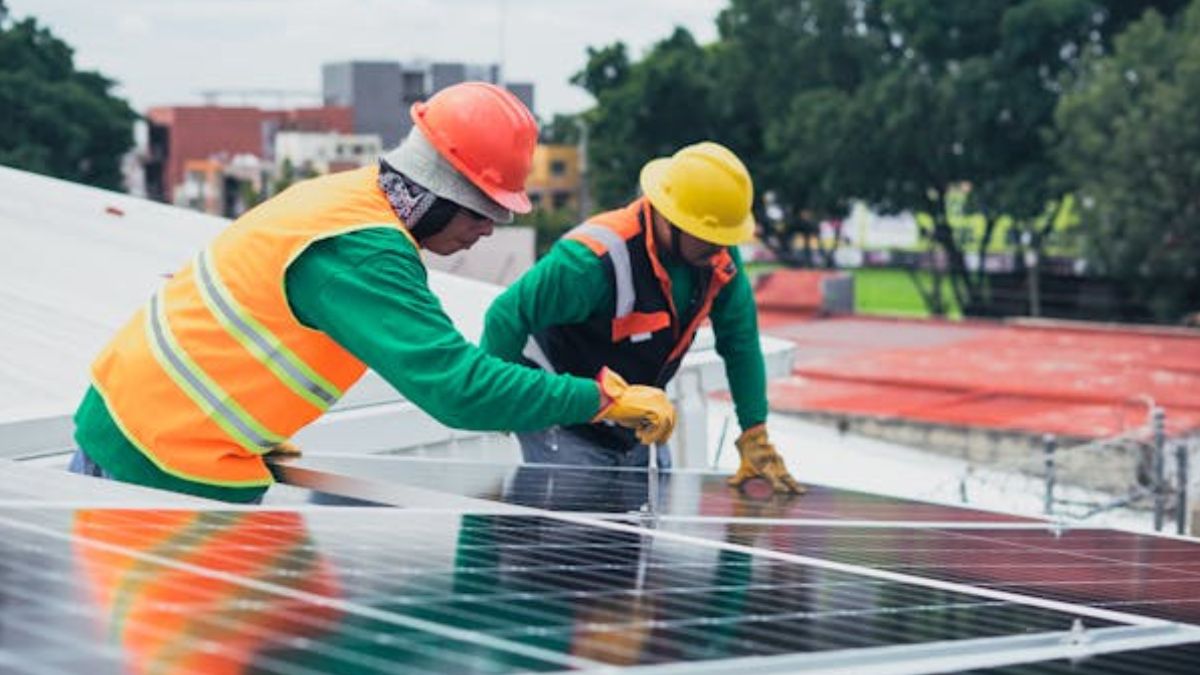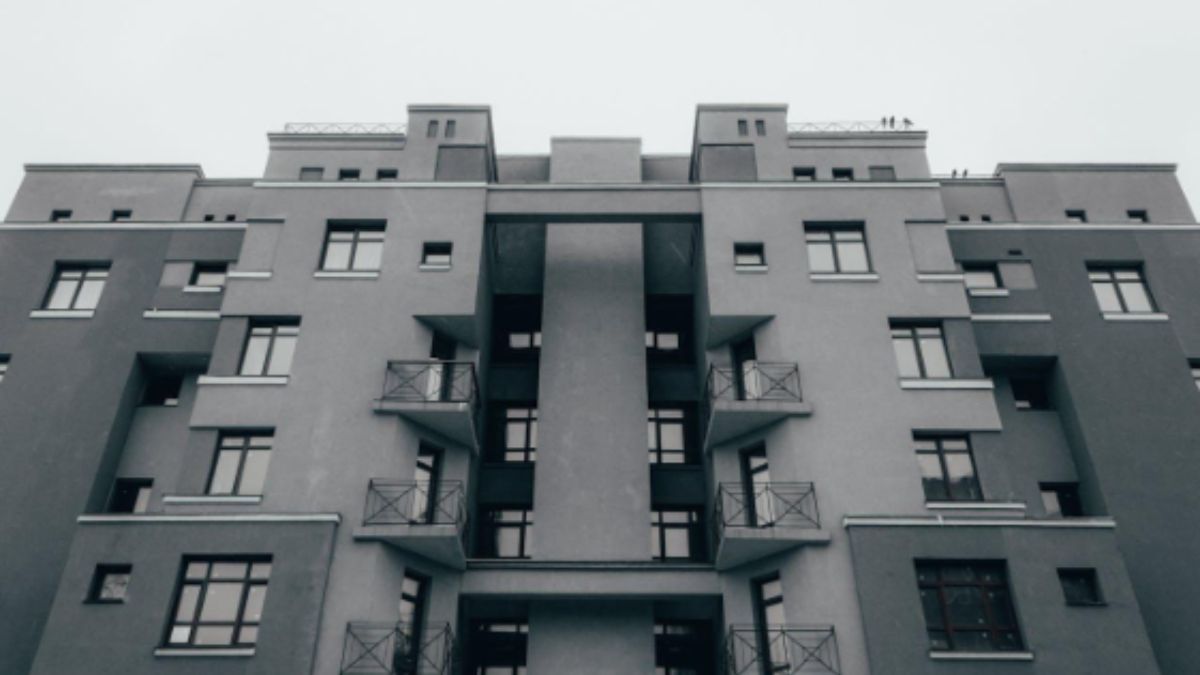CONSTRUCTION
Selecting the Perfect Flooring for Your House; Helpful Suggestions

When deciding on the flooring for your rooms or areas within your home or office space to consider, think about how durable and practical it is for your needs and personal taste preferences as well as how easy it is to keep clean and maintain its appearance over time. Take into account factors like how foot traffic the area receives regularly and whether the flooring material is resistant to moisture damage so that you can enjoy a lasting investment in your space that meets both your practical requirements and aesthetic desires. Whether you opt for hardwood floors to add warmth and character to a room or choose vinyl for its low maintenance qualities or even go with tile for a chic finish. It’s important to strike a balance, between functionality and style that complements your unique needs perfectly.
Choosing the type of flooring is crucial for any space
Installing flooring in your home can make an improvement, in both its look and functionality – not enhancing the overall ambiance but also positively influencing the long term value of your property as well! Research from HGTV indicates that certain flooring types can significantly boost a homes resale value, for homeowners seeking tile installation near me could be a crucial choice that ensures their investment is worthwhile.
Choosing thoughtfully is key, for long term satisfaction. Maximizing the value of your investment in the run. Select the type of flooring you want carefully as it can affect factors such, as comfort and maintenance costs over time. Therefore it’s crucial to evaluate all factors before deciding on a material or style. Neglect of this decisions significance could lead to discontent in the increased maintenance needs that may raise your costs and efforts down the line.
Different Types of Flooring Materials
When deciding on the flooring for your space, you’ll come across options each with its own advantages and disadvantages to weigh in consideration. Hardwood floors are well liked for their durability and aesthetics. Require care to avoid scratches and wear. Laminate flooring offers a look at a price point and is known for being easy to install and upkeep. Tile is an option ideal for areas with heavy foot traffic or moisture concerns such, as bathrooms and kitchens. Vinyl flooring is recognized for its ability to resist water and its low maintenance needs but keep in mind that priced options may not have a lifespan. Carpet provides a feeling underfoot. Is great, for bedrooms and living areas to enhance the atmosphere while also offering insulation from chilly weather outside.
Aspects to Take into Account
When you’re choosing flooring options to enhance your living space or renovate your homes, look and feel in mind several aspects play a role in making the decision. To start with setting a budget is crucial to stay on track and make spending choices that fit within your means while still achieving the desired quality standards for your floors. Considering the level of foot traffic areas of your living space endure is important as it determines the durability requirements for flooring materials such as hardwood or tile which are better suited for trafficked zones whereas carpet might be more suitable for bedrooms or areas with less frequent use. Factor in the time and effort needed for cleaning and maintenance as flooring materials come with varying upkeep needs which can impact your routine and lifestyle. Moreover, take into account your homes climate conditions and humidity levels when selecting flooring types as some wood varieties may be prone to warping in environments ultimately affecting their longevity in settings. On the other hand, pricier materials such as tile or laminate may fare better in regions. By taking these factors into account, you can be confident that your flooring will maintain its appearance and durability despite the conditions and obstacles in your home environment.
Living House Flooring
When selecting your flooring type consider how it matches your life— its ability to last long and feel right and the effort it needs for strife. For owners seeking the best go for materials to clean and scratch proof like tile or vinyl without any jest to handle your furry friends on the roof. Families with kids at play should opt for carpets soft creating a cozy spot where laughter may sway without worries of damage aloft. For those who love to host and entertain, choose from luxurious tiles that are grand, and resilient to spills and wear with no strain while keeping elegance at hand. Choosing the flooring that fits your lifestyle is essential to make sure it can withstand your routines and stay in good shape as time goes by.
Tips for Keeping Things in Good Working Order
Taking care of your flooring is important to keep it looking great and lasting term. To maintain hardwood floors’ beauty and durability, regular maintenance is essential. To care for them properly, remember to sweep and use a combination of a mop and wood cleaner to preserve the finish without risking any damage from excess water or harsh furniture pads. For keeping your floors clean, use a brush or broom for sweeping and a slightly damp mop for tackling tougher stains without causing harm or encouraging mold growth in the grout lines. Don’t forget to vacuum to get rid of any dirt or dust buildup on your floors and carpets! Make sure you follow the manufacturers recommendations for taking care of your carpet ! It’s really important to vacuum and clean your carpets on a basis – consider using a carpet cleaner every six months to a year. Be sure to deal with spills promptly to prevent stains from becoming permanent! Don’t overlook rotating your rugs for even wear distribution! By keeping up with maintenance tasks, like these you not enhance the appearance and comfort of your home but also extend the life of your flooring materials.
Recent Advances and State of the Art Progressions
The world of flooring is evolving with eco options, like bamboo and cork, gaining popularity alongside recycled hardwood due to the industrys increasing focus sustainability concerns are driving this trend forward. Additionally, tiles and moisture detecting sensors are becoming popular for their comfort and early warning of water damage issues making them attractive to consumers. Patterns and vibrant color choices are also making a comeback in home decor to reflect design trends. Websites, like Houzz, provide information on flooring trends to help homeowners choose options that match their style preferences and technological needs effectively. Keeping up, to date with these trends can empower homeowners to make well informed choices regarding their flooring selections.
CONSTRUCTION
Ways to pay for emergency home repairs

We’ve all been there – that unexpected moment when something in your home breaks down. One minute, everything is fine, and the next, you’re facing a major emergency repair. Whether it’s a busted furnace, a leaking roof, or a dead air conditioning unit in the middle of summer, these expenses can feel like financial punches that come out of nowhere. Water heater issues? Not too bad, right? A few hundred bucks, and you’re back to hot showers. But the larger expenses, like replacing a furnace or dealing with roofing issues, can throw a serious wrench in your budget. So, how do you cover those hefty costs? Here are several ways to finance emergency home repairs, and some of them might surprise you.
Look Into a Personal Loan
One of the most common ways to cover emergency home repairs is through a personal loan. If you have good credit, you might be able to borrow a lump sum of money from a bank or credit union. Personal loans are often unsecured, meaning you don’t have to put up your house or other assets as collateral, which makes them a safer option than some other loans. However, keep in mind that interest rates can vary depending on your credit score, so it’s important to shop around for the best rates.
Personal loans usually have a fixed repayment term, so you’ll know exactly how much you’ll owe each month. While this can help you budget and avoid surprise payments, it’s important to ensure you can afford the monthly payments before taking on this type of loan.
Home Equity Line of Credit (HELOC)
If you own your home and have built up some equity, a Home Equity Line of Credit (HELOC) might be an option for covering major repairs. This type of loan works similarly to a credit card: you’re given a credit limit, and you can borrow what you need, when you need it. The major difference is that a HELOC is secured by your home, so there is a risk if you fail to repay the loan.
While a HELOC can have lower interest rates than personal loans, it also requires you to use your home as collateral, which means you could risk losing your house if you can’t repay the loan. Make sure you can comfortably manage the payments before choosing this route.
Credit Cards: Not Always the Best, but an Option
Credit cards are often seen as a last resort for emergency expenses. That’s because interest rates on credit cards can be sky-high, especially if you carry a balance month-to-month. However, if you need to make a repair immediately and you have a credit card with a decent limit and a relatively low interest rate, it could be a quick fix.
Some credit cards also offer introductory 0% APR for a certain period, which can be a great option if you’re confident you can pay off the balance before the interest kicks in. However, if you can’t pay off the debt in time, the interest will hit hard, and you could end up paying far more than you initially borrowed.
Government Grants or Assistance Programs
For certain home repairs, especially those that affect your safety and health, there may be government assistance programs available. These programs are typically aimed at low-income homeowners or those who are elderly or disabled. For example, the U.S. Department of Housing and Urban Development (HUD) offers programs like the Section 504 Home Repair Program, which provides grants and loans to help homeowners make necessary repairs.
It’s worth doing some research to see if you qualify for any local, state, or federal programs. These grants and loans often don’t need to be repaid or come with very low-interest rates, making them a great option if you meet the eligibility requirements.
Home Repair Financing Through Contractors
Some contractors offer financing options for big repairs, like replacing your roof or furnace. These financing plans can be a good way to spread the cost of the repair over time, and some contractors offer interest-free financing for a set period. It’s a way to get the work done immediately without having to come up with all the money upfront.
However, it’s important to read the fine print carefully. If the financing offer seems too good to be true, it might come with hidden fees or extremely high-interest rates once the introductory period ends. Always do your homework and compare contractor financing with other available options to ensure it’s the best deal for your situation.
Homeowners Insurance
If the damage to your home is caused by a covered event (like a fire, storm, or vandalism), your homeowners insurance policy might cover some or all of the costs of repairs. Keep in mind that insurance will typically cover the repair or replacement of the damaged item (like a roof or furnace) after you meet your deductible.
For emergency repairs, homeowners insurance can be a life-saver, but it’s not always a guarantee that every issue will be covered. For example, if your furnace breaks down due to normal wear and tear, insurance is unlikely to cover the repair. It’s important to check your policy and contact your insurer to understand what’s covered in these situations.
DIY or Temporary Fixes
Sometimes, the best way to deal with an emergency home repair is to take a step back and assess the situation. Can you temporarily patch things up until you have enough funds to do a full repair? This is especially true for issues like plumbing leaks or roof damage. While it’s not a long-term solution, a temporary fix can buy you some time and allow you to save money for a permanent repair.
If you’re handy around the house, you might be able to tackle some minor repairs yourself. Fixing a leaky faucet or patching up a small hole in the roof could save you hundreds of dollars in labor costs. However, be careful about tackling larger, more complicated repairs unless you’re fully confident in your skills.
Final Thoughts
Emergency home repairs can be a real financial burden, but there are several ways to cover the costs without completely breaking the bank. Whether you’re considering a personal loan, using a credit card, tapping into your home equity, or applying for government grants, it’s important to weigh your options carefully and make sure you choose the one that best fits your financial situation.
Before making a decision, take a moment to assess your ability to repay the loan or credit, and explore any options that could help you minimize costs, such as government assistance or contractor financing. While home repairs are never welcome, with the right plan, you can get your home back in shape without causing financial strain.
CONSTRUCTION
Sustainable Roofing Solutions: Innovations and Practices in Commercial Roofing

As the demand for environmentally friendly construction grows, the roofing sector is experiencing a considerable change. Nowadays, commercial roofing isn’t just about protection but innovation and sustainability. Modern roofing approaches focus on reducing energy consumption, enhancing building aesthetics, and improving the urban environment. From minimizing energy bills to lessening urban heat, sustainable roofing practices are shaping the future of our cities and businesses, making them more livable and efficient.
This guide delves into the various aspects of sustainable roofing solutions. Whether you are a business owner contemplating a roof replacement or an architect interested in the latest roofing trends, you’ll find valuable insights here. By exploring cutting-edge technologies, materials, and best practices that align with the growing environmental consciousness, it becomes clear how impactful these strategies can be. In an era where climate change is at the forefront of agendas, investing in sustainable roofing offered by a roofing company is not just an option; it’s an imperative.
Introduction to Sustainable Roofing
Sustainable roofing encompasses various materials and practices designed to minimize environmental impact. It includes using recycled materials, improving energy efficiency, and implementing innovative technologies. With buildings accounting for a significant amount of energy and resource use, the importance of sustainability cannot be overstated. These approaches help conservation efforts and lead to long-term savings and a healthier environment, contributing to a larger initiative in addressing climate change and resource depletion.
The Benefits of Green Roofs
Green roof roofs play a critical role in urban biodiversity, creating habitats for various species of birds, insects, and plants. They also enhance air quality by removing atmospheric pollutants and carbon dioxide. Moreover, green roofs reduce the urban heat island effect, making cities significantly warmer than surrounding rural areas. Green roofs can substantially curb temperature hikes in city centers, offering a cooler and more pleasant environment during scorching summers. This cooling effect makes urban living more comfortable and lowers the need for air conditioning, leading to energy savings.
Cool Roof Technologies
Cool roofs are made to reflect additional sunlight and take in less heat compared to a typical roof. It is achieved through reflective paint, cool roof tiles, or a reflective sheet covering. Cool roofs can decrease air conditioning needs by minimizing the heat taken in by the structure, particularly during peak summer months. The energy saved translates to reduced costs and diminishes the strain on power grids, which is critical for energy conservation efforts. Such technologies impact energy consumption, lowering utility bills and reducing greenhouse gas emissions. The benefits extend beyond individual buildings; the extensive implementation of cool roofs can aid in lower ambient temperatures in cities, mitigating the urban heat island effect.
Recyclable Roofing Materials
Investing in recyclable roofing materials is a smart, eco-friendly choice. Materials like metal, rubber, and certain polymers can be repurposed, decreasing the need for new raw materials. By choosing recyclable options, businesses contribute to what can be reused, reducing the demand for extra raw materials used more efficiently. Recyclable roofing options decrease landfill waste and can be a cost-effective choice as the initial installation costs are offset over time through their durability and minimal maintenance needs. Furthermore, these materials often boast superior longevity and lower environmental impact than conventional roofing materials, providing a win-win solution for sustainability.
Solar Roofing Integration
Solar panels integrated into roofing systems harness the sun’s energy to generate electricity. Solar roofs serve a dual purpose: providing shade and cooling to the building while generating clean energy. This integration enhances energy efficiency and embodies a commitment to renewable energy adoption. The result is reduced dependence on non-renewable resources and a significant cut in energy expenses. With advancements in photovoltaic technology, solar roofing has become more efficient and affordable for commercial applications. The enduring savings and ecological advantages make solar roofing a compelling and responsible option for contemporary companies.
Best Practices for Sustainable Roofing
Choosing the right sustainable roofing materials and contractors is crucial in ensuring effectiveness and durability. It starts with thorough research to ensure the materials used align with environmental standards and the local climate. Different regions may require specific roofing solutions to optimize performance and sustainability. Regular maintenance extends the roof’s lifespan and prevents costly repairs. It’s also beneficial to partner with experienced contractors specializing in sustainable practices, ensuring quality and efficiency. Engaging in continuous learning about emerging technologies and materials can empower businesses to make informed decisions that align with their sustainability goals.
Future Trends in Commercial Roofing
The commercial roofing industry is moving towards more interactive and intelligent systems. Smart roofing, incorporating sensors and automation for monitoring and maintenance, will likely become commonplace. These advanced systems enable proactive management of roofing health, identifying issues before they escalate and ensuring optimal performance. Additionally, as policies and regulations focus more on sustainability, innovation will continue to drive the development of new materials and techniques. Integrating AI and IoT in roofing solutions promises to revolutionize how commercial buildings manage energy and resources, enhancing sustainability and efficiency.
Conclusion
Sustainable roofing solutions offer myriad benefits, from cost savings to environmental preservation. Companies can establish a more sustainable future by adopting green practices and leveraging new technologies. The roofing evolution improves building efficiency while demonstrating a dedication to environmental responsibility. As awareness and technologies advance, the potential for positive impact through sustainable roofing becomes even more significant, paving the way for healthier communities and a resilient planet.
CONSTRUCTION
When is it time to renovate the electrical systems in your building?

We often overlook the electrical systems in our buildings, focusing more on aesthetics or immediate repair needs. However, neglecting this crucial system can lead to significant issues, ranging from minor inconveniences to major safety hazards. Knowing when to renovate your electrical system is key to maintaining a safe and efficient property, ensuring that all components meet current demands and regulatory standards.
Choosing the right time for renovation
Timing your electrical renovation can be critical in minimizing disruption. Consider planning renovations during off-peak seasons or hours to reduce the impact on your tenants or business operations. Engaging experts from reputable property management companies in Montreal can help in smoothly navigating these renovations, ensuring that the process is efficient and the results are beneficial for all parties involved.
Recognizing the signs of an outdated electrical system
Electrical systems have a lifespan and exhibiting certain signs can indicate it’s time for a renovation. Flickering lights, frequent circuit breaker trips, and the use of multiple extension cords are clear signals. If your building is older and hasn’t had an electrical update in decades, it’s worthwhile to consult property management companies in Montreal who specialize in assessing such needs. These experts can provide a detailed evaluation and recommend whether a full or partial upgrade is necessary.
The role of technology upgrades
In today’s digital age, having an outdated electrical system can hinder the functionality of high-tech appliances and devices. If you find that your system struggles to keep up with the technological demands of tenants or business operations, it might be time to consider an upgrade. This not only improves efficiency but also attracts tech-savvy tenants or clients, enhancing your property’s appeal. Upgrading can also reduce energy consumption, contributing to a more sustainable operation.
Safety concerns that demand immediate action
Safety should always be the top priority. Signs of electrical problems such as burning smells, visible burns on outlets, or shocks from electrical devices are urgent cues that your building’s electrical system needs attention. Such issues are not only hazardous but could potentially lead to severe accidents or fires if not addressed promptly. Immediate renovations can restore safety and give peace of mind to all building occupants.
Evaluating the impact of regulatory compliance
Regulations regarding building safety and electrical standards often change. Staying compliant is crucial not only for safety but also to avoid legal penalties. Renovating your electrical system to meet current codes and standards can save you from future troubles and significant financial liabilities. Compliance ensures that your property adheres to the latest safety norms, which is essential for insurance and real estate value.
Planning for the future: scalability and flexibility
As your building ages, its needs will evolve. Planning a renovation with scalability in mind ensures that the electrical system can handle future upgrades and changes. This foresight can be especially beneficial in rapidly developing areas, or in buildings expected to experience growth in tenant capacity or technological use. Designing a flexible system allows for easy updates, which can be crucial for adapting to technological advancements and increasing demand.
Renovating your building’s electrical system is a major undertaking, but it’s an essential one for the safety, efficiency, and longevity of your property. With the right planning and expert advice, you can ensure that your property remains up to date and compliant with all safety regulations. Act now to secure your investment and safeguard your occupants.
-

 HEALTH2 years ago
HEALTH2 years agoIntegrating Semaglutide into Your Weight Loss Plan: A Practical Guide
-

 HOME IMPROVEMENT2 years ago
HOME IMPROVEMENT2 years agoHow to Choose the Perfect Neutral Area Rug for Every Room
-

 LAW1 year ago
LAW1 year agoTeenage Drivers and Car Accidents in California: Risks and Parental Liability
-

 CONSTRUCTION1 year ago
CONSTRUCTION1 year agoConstruction Site Safety Regulations in New York and Your Rights as a Worker
-

 LAW1 year ago
LAW1 year agoPost-Divorce Considerations in California: Modifications and Long-Term Planning
-

 HOME2 years ago
HOME2 years agoSandra Orlow: The Teen Model Who Captivated the Internet
-

 FINANCE1 year ago
FINANCE1 year agoDigital Asset Management in Florida Estate Planning
-

 FASHION2 years ago
FASHION2 years ago7 Celebrity-Inspired Elegant Summer Dresses For 2024
